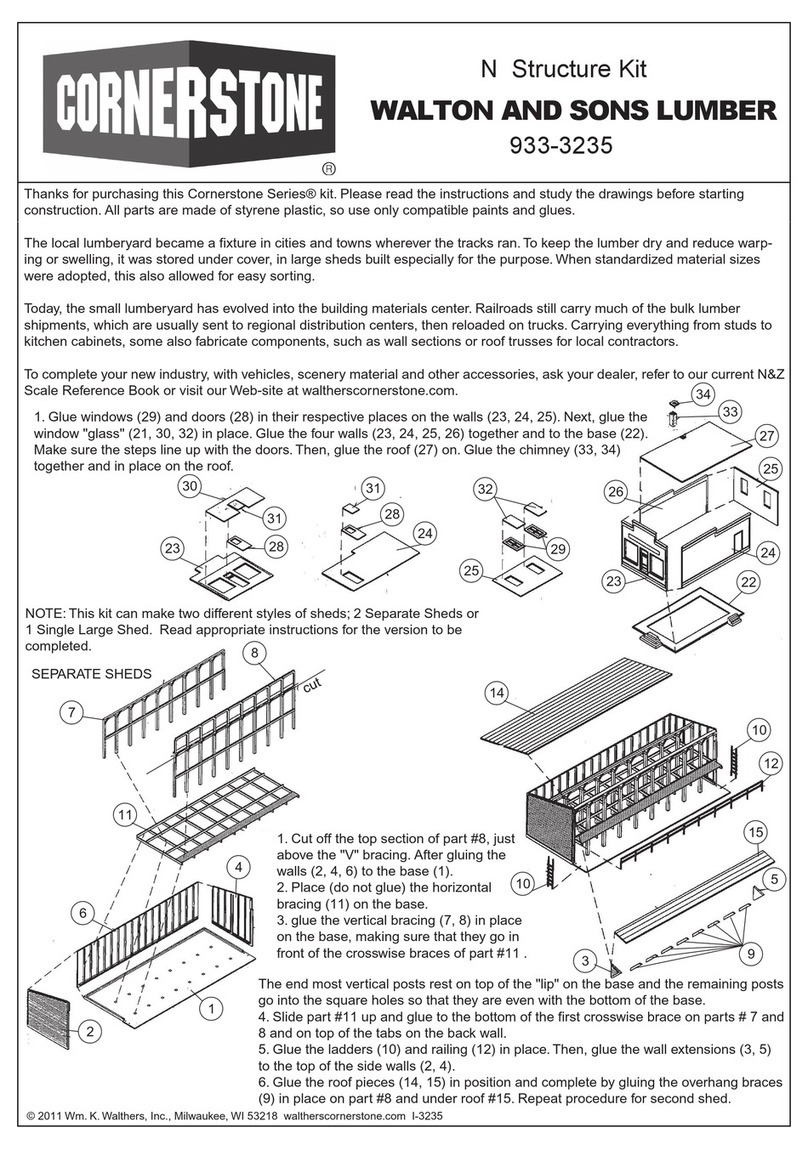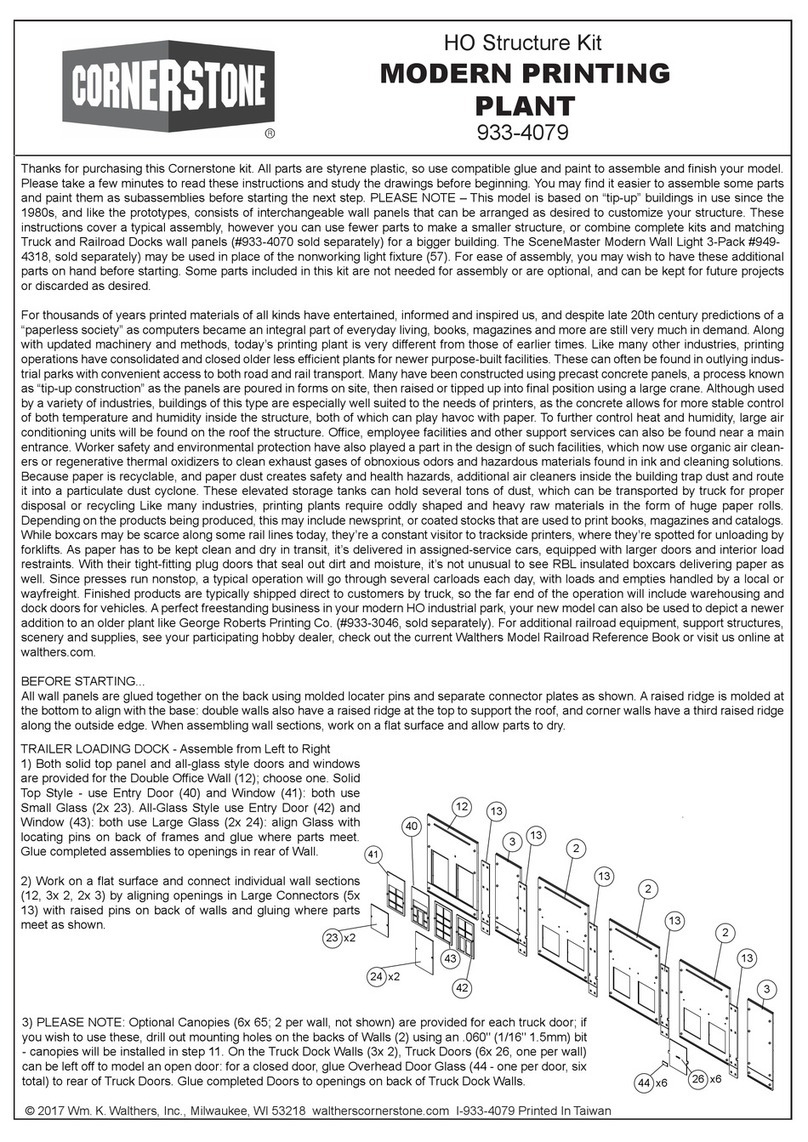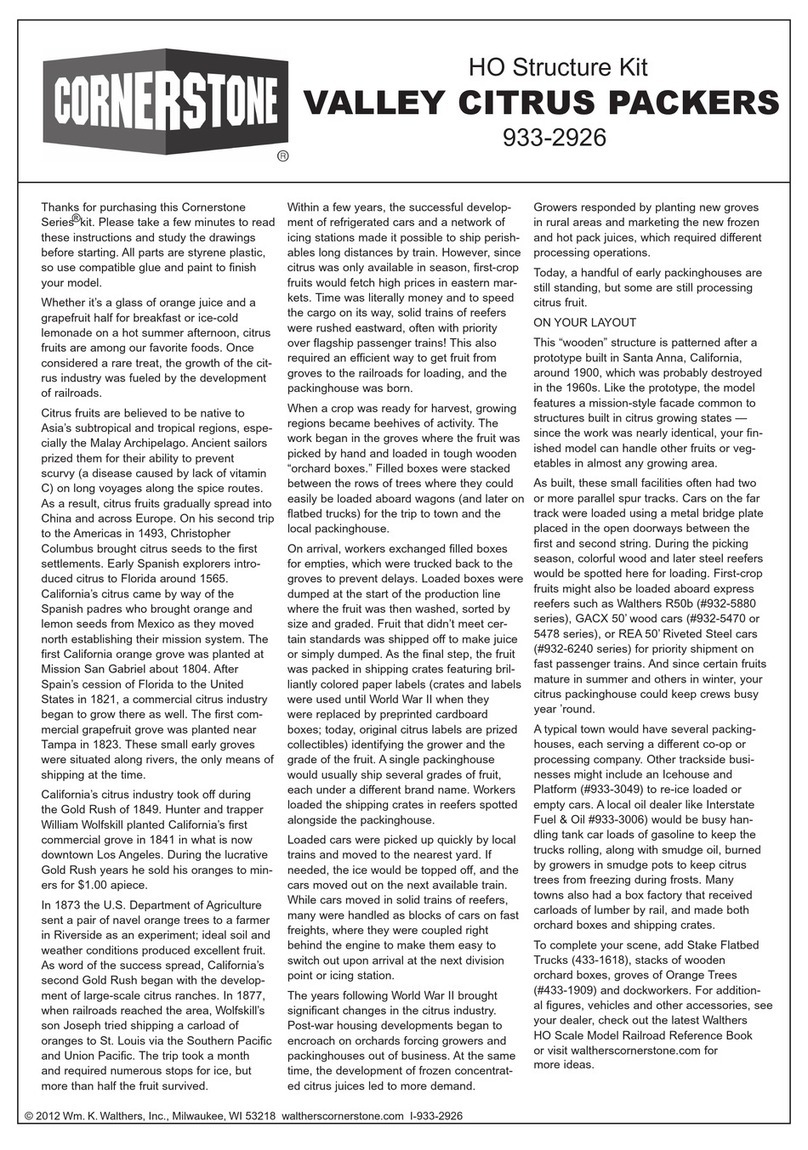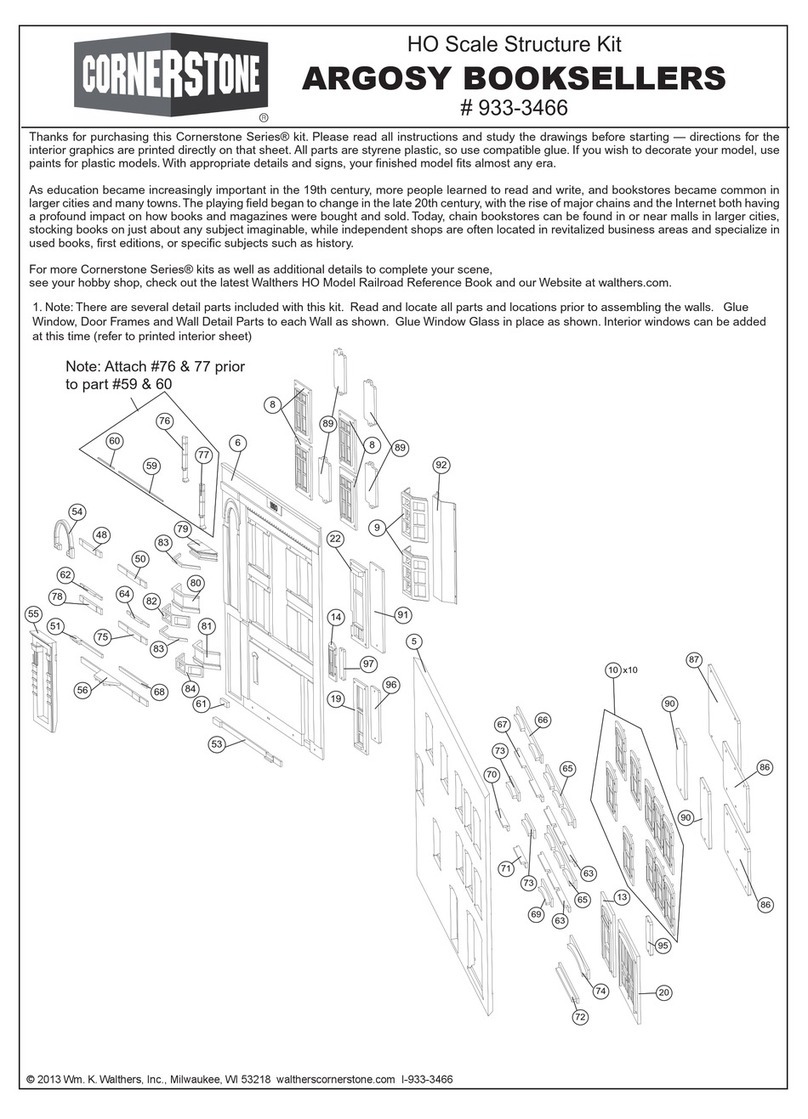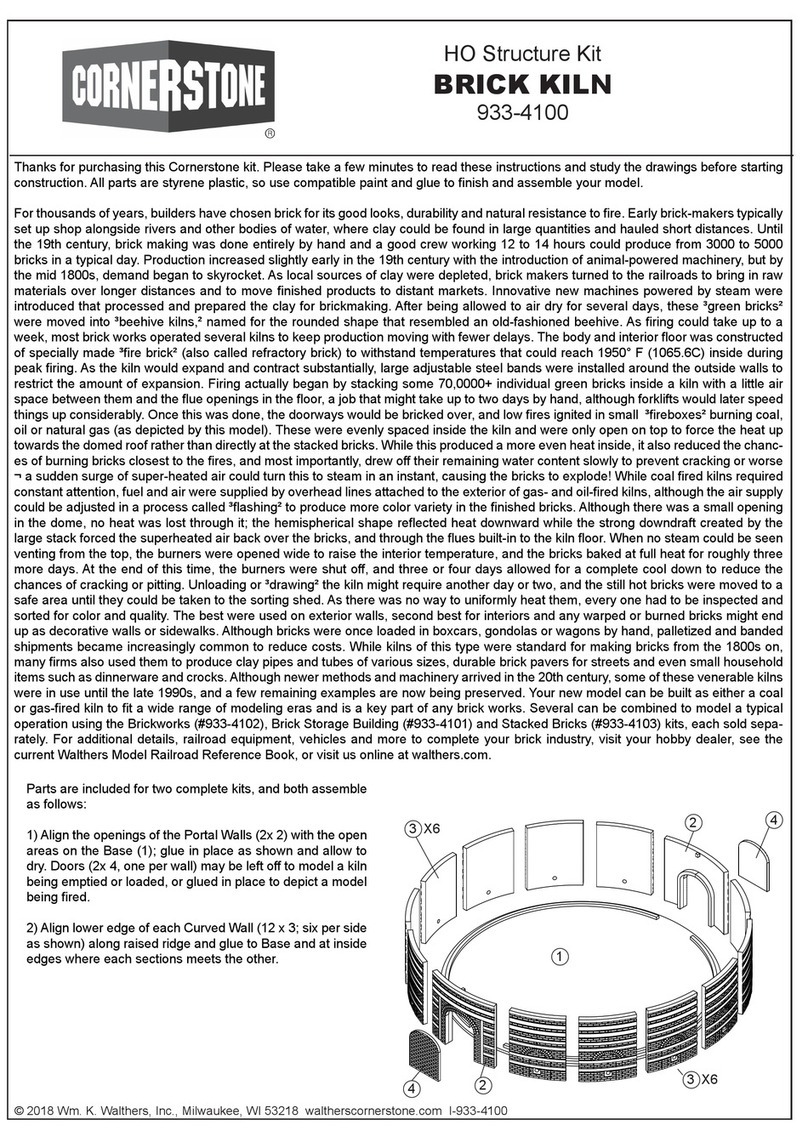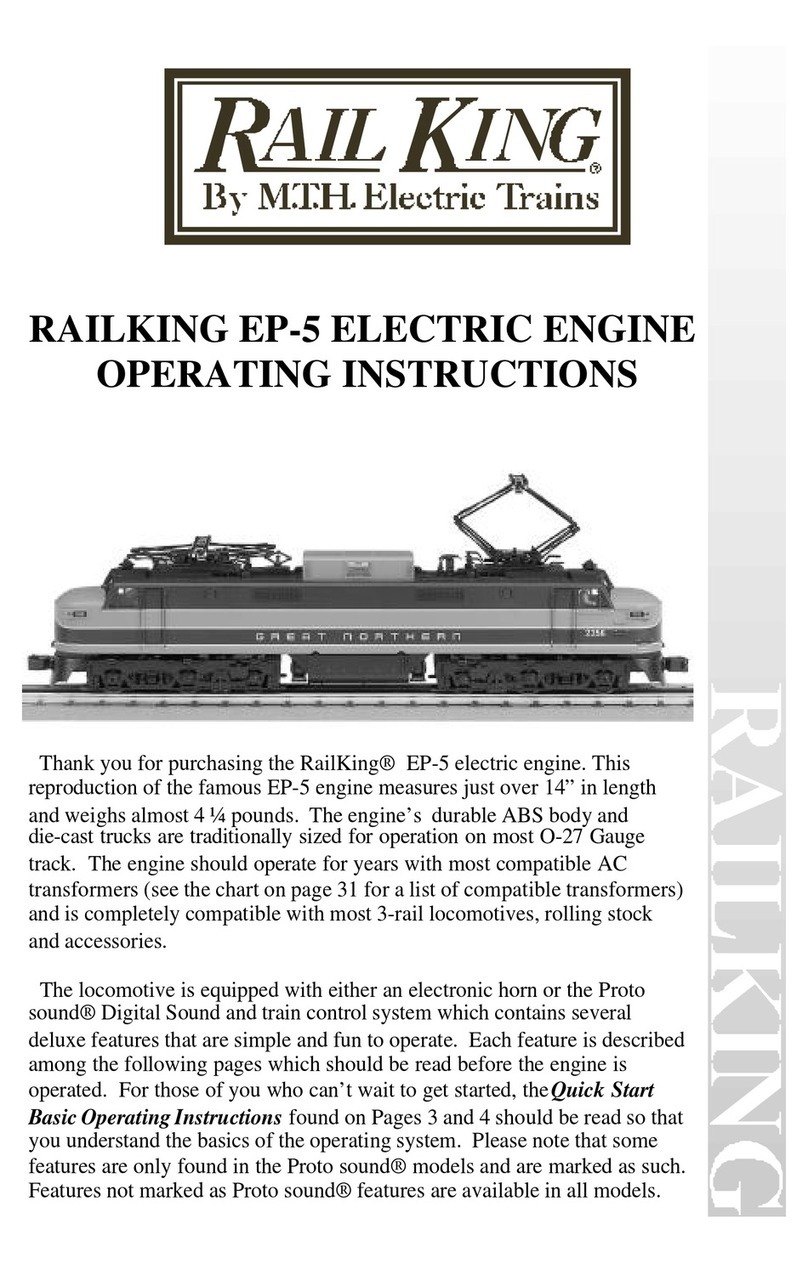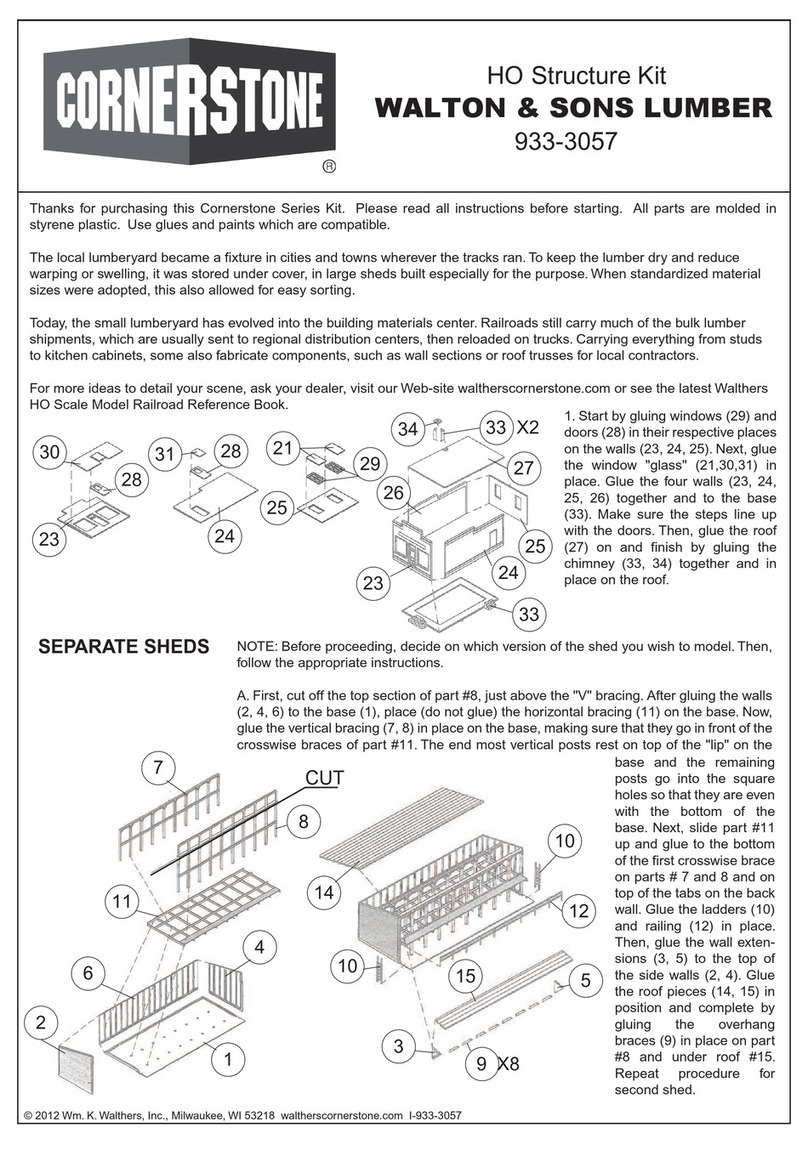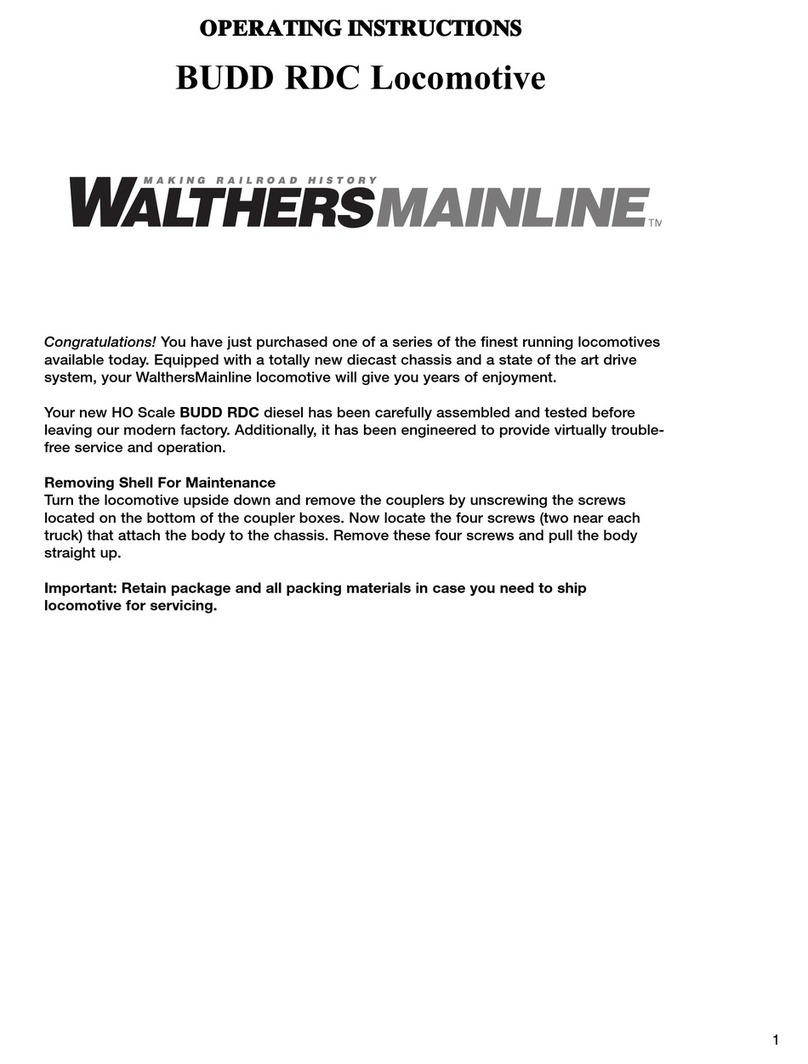Thanks for purchasing this
Cornerstone Series®Kit. Please
take a few minutes to read these
instructions and study the draw-
ings before starting construction.
All parts are made of styrene, so
use compatible paint and glue to
finish your model.
For thousands of years, natural
obstacles such as rivers and val-
leys prevented humans from trav-
eling easily. In ancient times, we
used natural bridges or created our
own from fallen logs, piles of
stones, or by twisting natural
materials together. These three
starting points were the founda-
tion for the beam, arch and sus-
pension bridges of today.
Over time, the art and science of
bridge building continued to
evolve. With the rise of the
Roman Empire and its extensive
road system, bridge building took
on a new importance across
Europe. During this time, engi-
neers made significant advances
including the development of the
masonry arch and the use of natu-
ral cement. During medieval
times, bridges were often con-
structed by religious orders, often
incorporating shops and fortifica-
tions in their designs. By the
Renaissance, advances in mathe-
matics led to improved truss and
arch designs, and a better under-
standing of the workings of pil-
ings and supports. In this period,
bridges were designed with more
attention to how they fit the ideal
of a city scene, with more atten-
tion to visual and artistic details.
While iron had been used in a
very limited way since ancient
times, it became available in large
quantities for the first during the
late 18th century. Engineers had a
new and durable material with
which to work, and iron bridges
began to appear. With its
increased load-bearing ability, iron
was also adapted to the heavier
bridges required by the new rail-
roads.
But iron had its limita-
tions and by the late 19th century,
steel was taking over as the
material of choice, especially for
railroad bridges that had to sup-
port heavier trains.
At the same time, advances in
concrete and cement technology
made it increasingly popular as a
building material for both founda-
tions and bridges. Engineers soon
found that pouring concrete over a
skeleton of iron screen, rods or
bars increased the strength of the
finished design and allowed for a
variety of shapes and forms. On a
larger scale, this “reinforced con-
crete” became increasingly com-
mon as a material for new bridges.
As America began shifting from
horses to horsepower, a new gen-
eration of highway bridges
appeared. Increasing volumes of
trucks and automobiles presented
problems for bridges built to carry
horses and carriages in cities, as
major routes became increasingly
congested. And as the highway
system expanded into rural areas,
older wooden bridges had to be
replaced. During the 1920s and
30s, many of these older bridges
were replaced as state and federal
projects. These combined ancient
ideas such as the arch with mod-
ern technology to produce
durable, attractive structures.
Many of these bridges remained
in use for decades, until outdated
by newer safety standards,
increasing volumes of traffic and
old age. On less traveled routes,
some survive today.
ON YOUR LAYOUT
Perfect for any highway from the
1920s to the present, this single
arched, concrete bridge is typical
of those built all over America.
Handling traffic above and below,
bridges like this were often con-
structed in areas where existing
intersections were creating bottle-
necks and safety hazards.
Both the deck and the lower level
are designed for use with any of
Walthers Cornerstone Series
Street Systems components,
which are available to model
brick, concrete or asphalt streets
to fit a wide range of modeling
eras. You can also set the time and
place of your street scene quickly
and easily with the many styles of
Cornerstone Series Built-Ups
Street Lamps (#933-1080 and
#933-1090 series).
HO Scale Kit
ARCHED ROAD BRIDGE
933-3196
For additional figures, vehicle and
accessories to set the scene, see
your dealer, check out the lastest
Walthers HO Scale Model Railroad
Reference book or visit our Web site
at waltherscornerstone.com for
more ideas.
© 2012 Wm. K. Walthers, Inc., Milwaukee, WI 53218 waltherscornerstone.com I-933-3196
